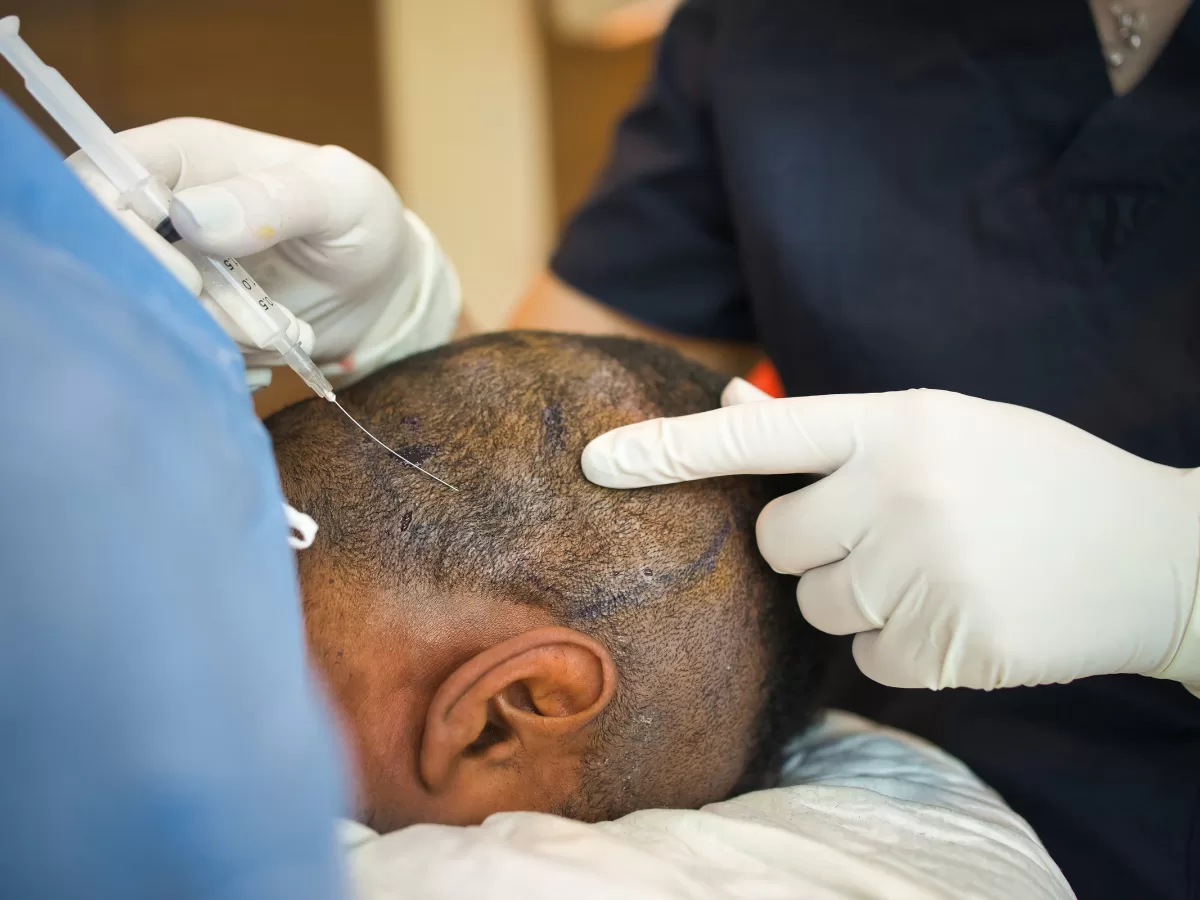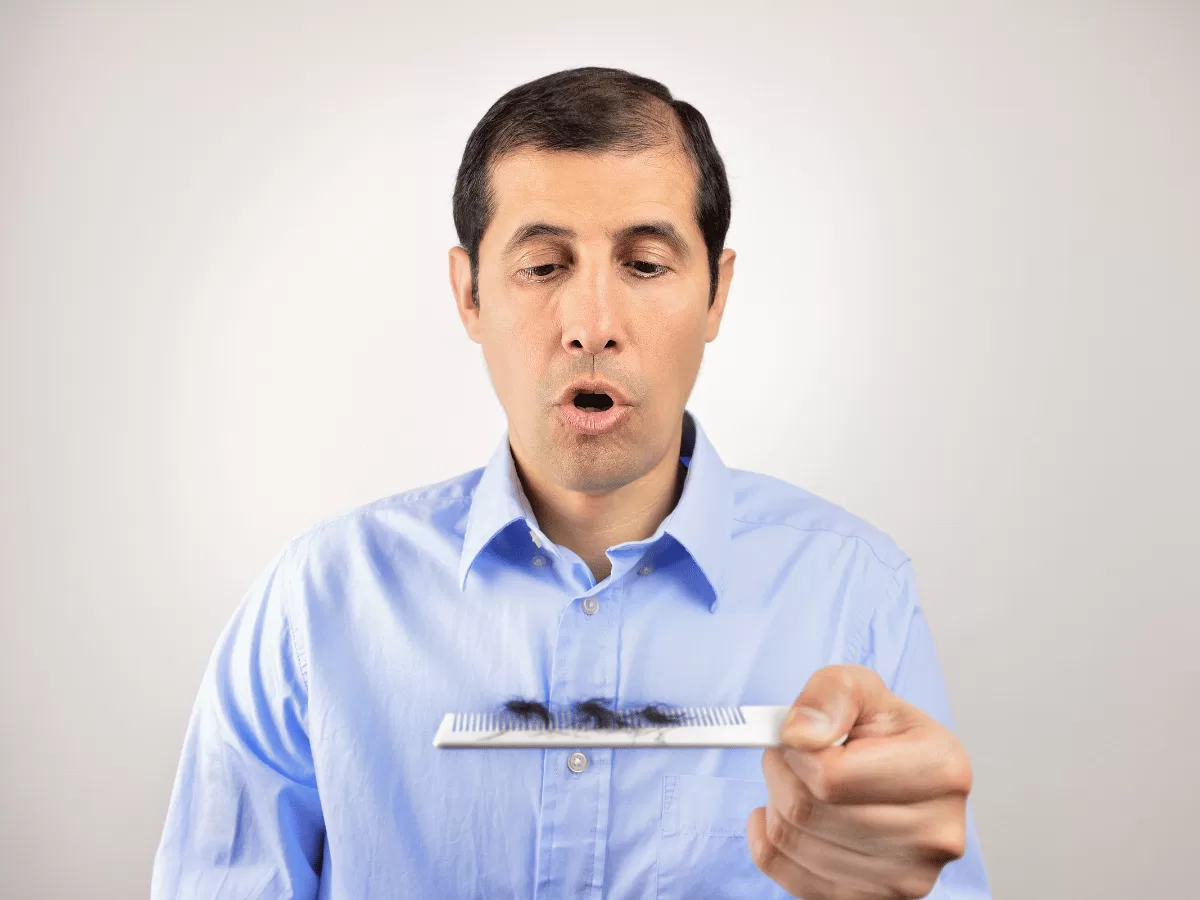
Will My Hair Transplant Look Natural? Our Commitment to Undetectable Results
It is, without a doubt, the number one question on the mind of every person considering hair restoration surgery: “Will my hair transplant look natural?”
The fear behind this question is completely valid, born from decades of seeing outdated procedures that left men with conspicuous, doll-like “plugs” of hair. The thought of trading baldness for an unnatural, tell-tale hairline is a terrifying prospect. It’s the primary reason many people hesitate to take the first step.
Let us put your mind at ease. The era of hair plugs is long over.
Today, a natural, undetectable hair transplant is not just a possibility; it is the standard of care at any elite clinic. Achieving a result so seamless that even your barber or hairstylist can’t tell is the benchmark of success. But this level of artistry isn’t automatic. It is the result of a profound evolution in medical understanding, advanced technology, and the meticulous skill of a dedicated surgical team.
At our clinic, we don’t just perform hair transplants; we recreate hairlines. This is our commitment to you: to deliver results so natural they are fundamentally undetectable. In this guide, we will pull back the curtain and show you exactly how this is achieved.
The Evolution of Hair Transplants: From “Plugs” to Follicular Units
To appreciate the naturalness of modern procedures, it helps to understand how far we’ve come. The old “hair plug” technique involved transplanting large, round grafts of skin containing 15-20 hair follicles. When these were placed in the balding area, they created a tufted, unnatural appearance reminiscent of a doll’s head. It was a crude method that solved hair loss but created an obvious cosmetic problem.
The revolution came with the understanding of Follicular Units.
Your hair doesn’t grow one strand at a time. It naturally emerges from the scalp in small, tightly-packed groupings of 1, 2, 3, or sometimes 4 hairs. These groupings are called follicular units. The paradigm shift in hair restoration was the realization that to create a natural result, we must transplant these units exactly as they occur in nature.
Modern techniques like FUE (Follicular Unit Excision) and DHI (Direct Hair Implantation) are built on this principle. We no longer move large chunks of skin; we meticulously extract and implant individual follicular units, one by one. This is the scientific foundation of a natural result, but it’s only half the story. The other half is artistry.
The Art and Science of a Natural Hairline
The single biggest giveaway of a hair transplant is a poorly constructed hairline. It is the area that frames your face and draws the most attention. Creating a natural hairline is a masterclass in art, blending scientific principles with an aesthetic eye.
1. It’s Not a Straight Line
Look at anyone with a natural, non-receding hairline. You will never see a perfectly straight, harsh line like it was drawn with a ruler. Natural hairlines are soft, slightly uneven, and unique to each individual. A surgeon’s first job is to design a hairline that is age-appropriate and suits the patient’s facial structure, avoiding the temptation to create the unnaturally low, straight hairline of a teenager.
2. Mastering Micro- and Macro-Irregularity
A world-class hairline has two levels of irregularity. Macro-irregularity refers to the overall shape—it has subtle curves and undulations, it’s not a perfect arc. Micro-irregularity refers to the very frontal edge. This edge is not a solid line of hairs but a staggered, feathered, and seemingly random placement of the finest follicles, which creates an imperceptible transition from skin to hair.
3. The Critical “Transition Zone”
To achieve this soft, feathered edge, we build what is called a “transition zone.” This is the first 1-2 centimeters of the hairline. Here, we exclusively use the finest, softest, single-hair follicular units. These are carefully placed in an irregular pattern to mimic nature. Behind this soft frontal zone, we gradually begin to place the denser 2-, 3-, and 4-hair grafts to build up the required density and fullness. This gradual progression is what makes the final result completely undetectable.
Beyond the Hairline: The Pillars of Undetectable Results
While the hairline is paramount, several other technical factors are crucial for ensuring the entire transplant looks natural from every angle.
Pillar 1: Correct Angulation and Direction
Your hair does not grow straight out from your scalp at a 90-degree angle. Each hair has a specific angle and direction depending on its location. Hair on the top of the head flows forward, hair at the temples angles downward and backward, and hair at the crown grows in a unique circular whorl pattern.
A master surgeon must place every single graft at the precise angle and direction of the native hair in that exact spot. This painstaking process ensures the transplanted hair blends seamlessly and flows naturally with the existing hair, allowing you to style it however you wish. Incorrect angulation is a classic sign of a poor-quality transplant, resulting in hair that sticks out unnaturally.
Pillar 2: Strategic Graft Placement & Density
Creating a natural look isn’t about cramming as many grafts as possible into one area. It’s about creating the illusion of density while respecting the scalp’s physiology. Each transplanted graft needs an adequate blood supply to survive and thrive. Placing grafts too close together can compromise this blood supply, leading to poor growth and a patchy result.
A skilled surgeon uses artistry to place the multi-hair grafts in a way that maximizes coverage and perceived density, without jeopardizing the health of the follicles.
Pillar 3: Meticulous Donor Area Management
The “donor area” is the region at the back and sides of your head where hair is genetically resistant to balding. This is where we harvest the follicular units for transplantation. A major component of a natural-looking result is ensuring this donor area remains looking healthy and full.
An inexperienced or aggressive surgeon might “over-harvest,” taking too many grafts from one small area. This can leave the back of the head looking thin, patchy, or scarred—another tell-tale sign of a bad hair transplant. Proper donor management involves extracting grafts evenly across the entire safe donor zone, preserving its appearance for the present and for any potential future sessions.
The Surgeon’s Hand: Why Your Choice of Clinic is Everything
Every principle we’ve discussed—from hairline design to graft angulation—is not performed by a machine. It is executed by the hands of a surgeon and their technical team. The difference between a detectable transplant and an undetectable one comes down to the experience, skill, and artistic sensibility of your chosen clinic.
A great hair transplant is a symphony of thousands of micro-decisions made throughout the procedure. A great surgeon is both a doctor and an artist. They understand the science of hair growth and the aesthetics of facial harmony.
When choosing a clinic in India, your focus should be on quality, not just cost. Look for:
- A board-certified lead surgeon with a special focus on hair restoration.
- A deep portfolio of high-resolution before-and-after photos. Scrutinize the hairlines—are they soft and irregular? Can you see close-up shots?
- Clear patient testimonials and reviews.
- A clinic that performs the procedure themselves, not one that outsources its technicians.
Top Searched FAQs About Natural Hair Transplants
How long does it take for a hair transplant to look natural?
The full, natural result is a journey of about 12-18 months. After the procedure, the tiny transplanted hairs will shed in 2-4 weeks (this is normal). New, permanent hair will begin to grow around the 3-4 month mark. The hair will initially be fine but will thicken over time. You will see significant results by 6-9 months, with the final maturation of density and texture occurring between 12 and 18 months.
Can people tell if you’ve had a hair transplant?
If performed by a top-tier surgeon using modern techniques, the answer is a resounding no. The goal of modern FUE/DHI is to create a result that is completely undetectable to the naked eye, even upon close inspection.
What is the difference between FUE and DHI for natural results?
Both FUE and DHI are excellent methods for achieving natural results because they both transplant individual follicular units. In FUE, the surgeon creates recipient sites first and then places the grafts. In DHI, a special implanter pen is used to create the site and implant the graft simultaneously. Both can yield equally natural results; the key factor is the skill of the surgeon using the tool, not the tool itself.
Will my transplanted hair fall out?
The hair from the newly transplanted follicles will shed in the first month. This is a normal and expected part of the hair growth cycle called “shock loss.” The follicle itself remains safe and secure under the skin and will begin to produce a new, permanent hair shaft after a few months. The hair that grows is permanent because it is taken from the donor area, which is genetically resistant to the DHT hormone that causes balding.
How many grafts will I need for a natural look?
This is highly individual and depends on the extent of your hair loss, the quality of your donor area, and your specific goals. A consultation with a surgeon is necessary to determine the exact number. It can range from 1,500 grafts for a receding hairline to over 4,000 grafts for more extensive balding.
Can I get a transplant if I have curly hair?
Absolutely. Transplanting curly hair requires special skill as the follicle is curved beneath the skin, but the results can be fantastic. Because curly hair has more volume and provides better coverage, fewer grafts are often needed to achieve the appearance of fullness compared to straight hair.
Does a hair transplant last forever?
Yes, the transplanted hair itself is permanent. However, the procedure does not stop the progression of hair loss in your non-transplanted, native hair. For this reason, many patients are advised to use medical treatments like Minoxidil or Finasteride to maintain their existing hair and preserve the overall result for as long as possible.
Our Conclusion: Your Confidence is Our Commitment
A natural-looking hair transplant is no longer a miracle; it is the standard of excellence. It is an intricate fusion of medical science and dedicated artistry. From designing a soft, age-appropriate hairline to placing each of the thousands of grafts at the perfect angle, every step is a deliberate move towards one goal: a result that seamlessly restores your hair and, more importantly, your confidence.
The fear of an unnatural outcome is valid, but it should not hold you back from exploring a solution. The first step towards a result you can be proud of is a conversation with an expert. Schedule your consultation with us, and let us show you our commitment to truly undetectable results.



